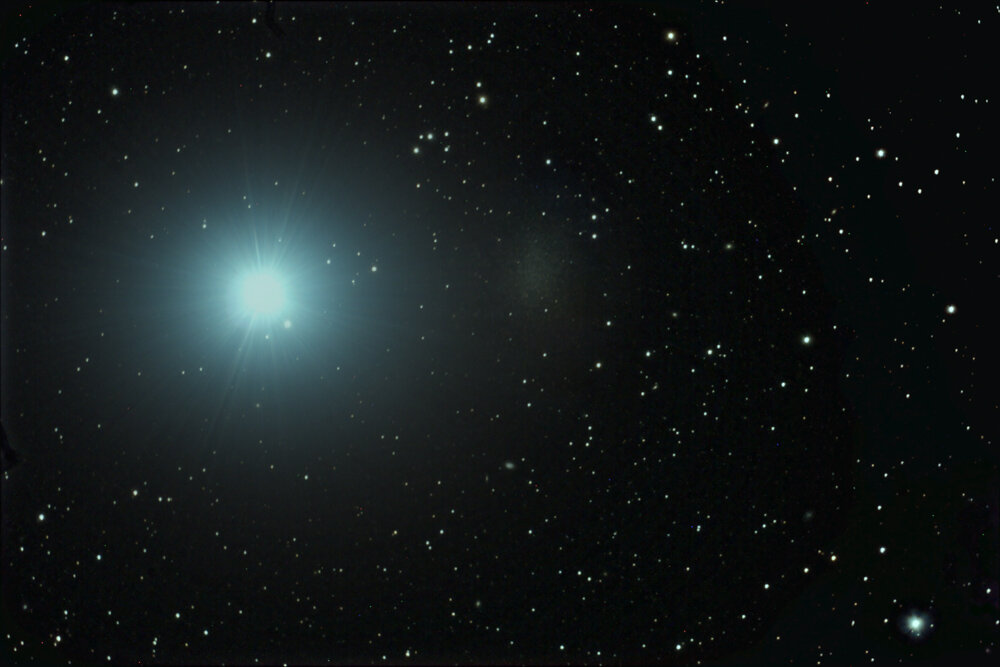Astronomers are trying to see the second most distant supermassive black hole from Earth. It is assumed that it is located in the dwarf galaxy Leo I, which is a moon of the Milky Way.

What the Leo I Galaxy hides
Leo I is a dwarf galaxy in the constellation of the same name, a moon of the Milky Way. It is located near the star Regulus, so it is relatively easy to find in the sky, but quite difficult to observe.
At the end of 2021, scientists noticed that the stars that make up this galaxy are surprisingly accelerated as they approach its center. They suggested that the reason for this behavior could be a black hole 3 million times more massive than the Sun. But it turned out to be impossible to provide clear evidence of its existence.
The fact is that about a billion years ago, star formation in the Leo I galaxy almost stopped. Around the same time, it lost almost all of its gas and dust. And we see supermassive black holes mainly due to the fact that matter falls on them, accelerates and emits electromagnetic waves.
In a new study published in the Astrophysical Journal Letters, scientists have suggested that old stars in the Leo I galaxy emit significant mass in the form of a stellar wind. This substance can get into the vicinity of a supermassive black hole, accelerate and make it visible to us.
Mystery of the dwarf galaxy
Scientists really hope to see the accretion disk around the black hole in the center of Leo I and find out what size it really is. The fact is that this dwarf galaxy is located at a distance of only 820 thousand light-years from us.
If the object at its center really has a mass of 3 million solar, then it will be the second supermassive black hole next to us after Sagittarius A*, located in the center of the Milky Way. In this case, scientists will have the opportunity to study these amazing objects in more detail.
In general, scientists do not expect to see a black hole with a mass comparable to Sagittarius A* in the galaxy, which is thousands of times smaller than the Milky Way. It is believed that if a central black hole is found in dwarf systems, then it must be of intermediate mass.
So, scientists would be interested to find out how it got into the Leo I galaxy. But even if it is actually a black hole of intermediate mass, they will not be disappointed, because few such objects are also known. Now researchers are going to explore it using the Chandra X-ray Observatory and a Large antenna array in New Mexico.
According to phys.org
Follow us on Twitter to get the most interesting space news in time
https://twitter.com/ust_magazine

